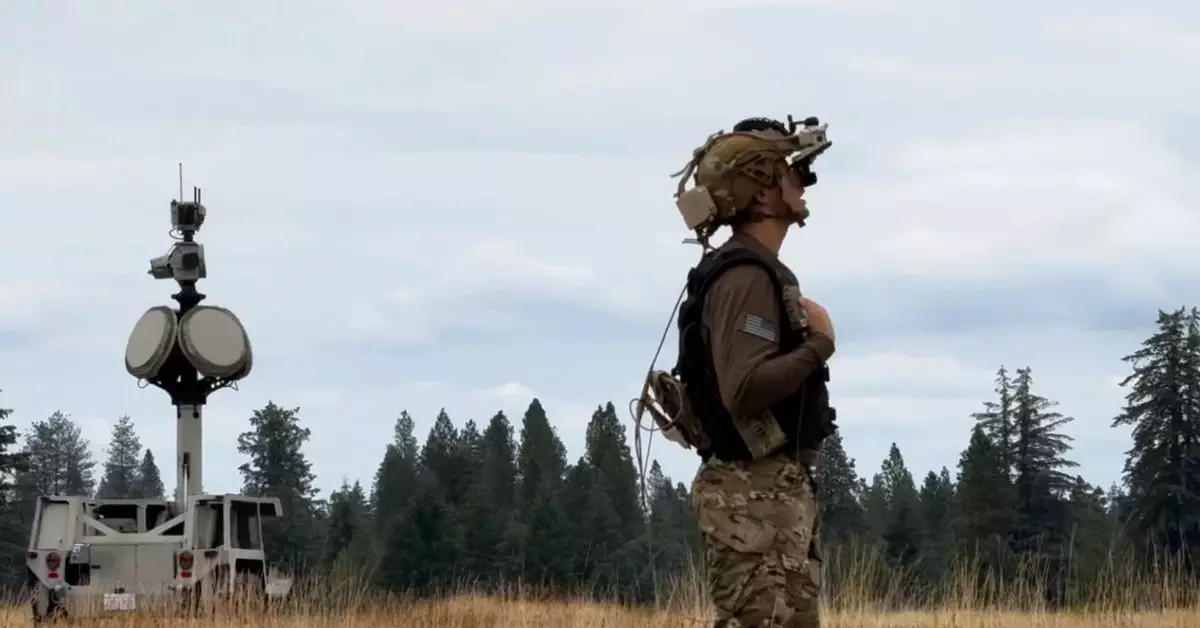The partnership between Anduril Industries, founded by Oculus VR visionary Palmer Luckey, and tech giant Microsoft is set to revolutionize how technology supports soldiers on the battlefield. This collaboration focuses on the Integrated Visual Augmentation System (IVAS), which aims to enhance the operational effectiveness of the United States Army through cutting-edge mixed-reality headsets. Leveraging Anduril’s Lattice software, the IVAS aims to provide soldiers with essential real-time data, integrating information from various sources such as drones and ground vehicles, thereby transforming modern warfare dynamics.
Luckey’s ambition to empower soldiers with an augmented experience is reminiscent of themes popularized in science fiction literature. By likening the IVAS to the advanced infantry headgear in Robert Heinlein’s iconic novel, *Starship Troopers*, Luckey taps into a cultural narrative where technology augments human capabilities. This parallel not only underlines the innovative nature of the project but also resonates with a sense of inevitability in technological progress—mirroring the aspirations of countless sci-fi authors, who envisioned such advancements decades ago.
Despite ambitious goals, early versions of the IVAS were met with a mixed reception. Reports of discomfort, including headaches and nausea during testing, showcased the inherent challenges of integrating advanced technology into a user-friendly experience. Microsoft has acknowledged these issues and made necessary adjustments, ensuring that their design meets the rigorous demands of military personnel while maximizing comfort and usability. This iterative design process is crucial not just for enhancing performance but also for fostering trust in newly adopted technologies among soldiers.
With the U.S. Army prepared to allocate a staggering $21.9 billion to the IVAS project over the next decade, the strategic implications of this partnership cannot be overstated. On one hand, it promises to create a more informed and agile combat force. On the other hand, it represents a substantial investment in military technology that could dictate the future landscape of warfare. This financial commitment is not merely a budgetary allocation; it underscores an acknowledgment of technology’s pivotal role in enhancing defense capabilities and operational readiness.
The integration of mixed reality into military operations raises important questions about the future of warfare. As projects like IVAS evolve, they do not just change how soldiers fight; they also influence defense strategies, international relations, and the ethical considerations surrounding combat. With real-time data at a soldier’s fingertips, decision-making could shift dramatically, potentially leading to faster resolutions in combat scenarios but also heightening the stakes of military engagements. As we step into this new era, it becomes imperative to consider the aftermath of these technological advancements—highlighting the balancing act between innovation and ethical responsibility on the battlefield.
The collaboration between Anduril Industries and Microsoft signifies more than a technological partnership—it’s a glimpse into the future of military engagement, where augmented reality could redefine the battlefield for generations to come. As these technologies advance, the intersection of creativity, computing, and combat will continue to evolve, challenging our perceptions of warfare and the role of technology within it.

